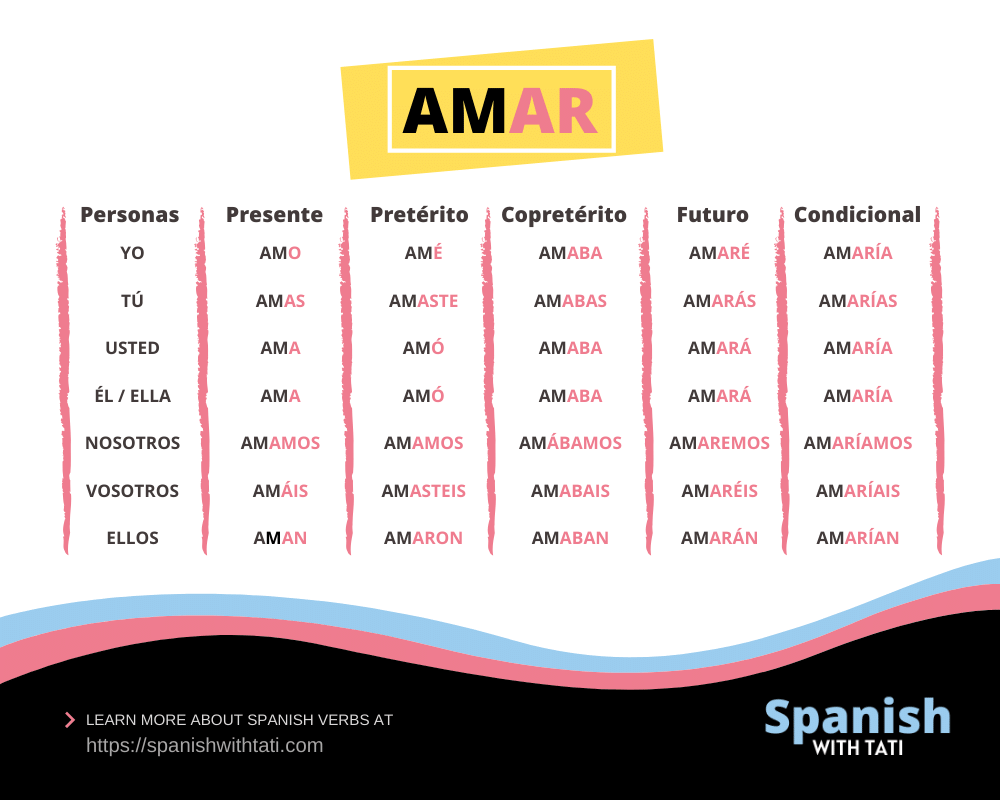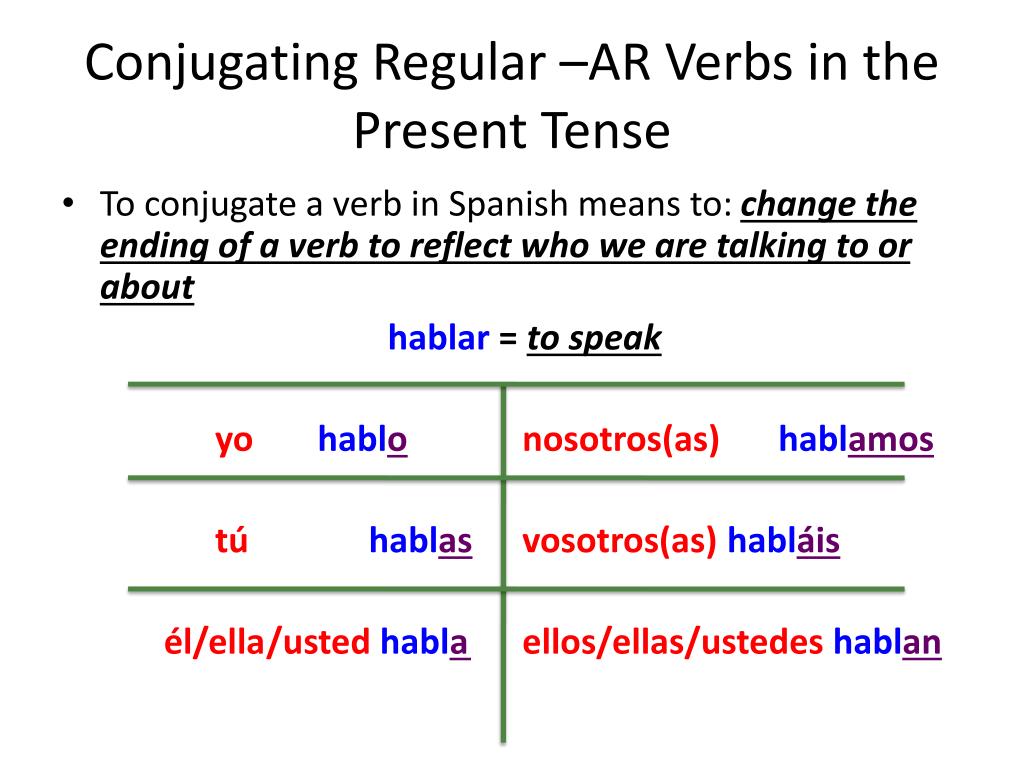
AR VERB ENDINGS DOWNLOAD
You can download the lists of verbs from my shared folder for Spanish Language. Nonetheless, in the colloquial language only a selected group of these verbs are used, which may affect the percentages, but the -ar verbs will still be the main group. So yes, the first category of verbs, the ones ending in -ar, comprises the vast majority of the total of verbs.

Note that these are the total numbers of verbs for each ending registered in the dictionary, so the lists include obsolete verbs, verbs that are only used in some regions, and so on. Verbs ending in -ir: 717 (6.0%, from abatir to zurrir).Verbs ending in -er: 670 (5.7%, from abastecer to yuxtaponer).Verbs ending in -ar: 10448 (88.3%, from ababillarse to zuzar).After downloading the result lists and processing them by removing the duplicated entries via Notepad++ I could come up with the following numbers: Using Enclave RAE I could get lists of verbs from dictionary of the the Royal Spanish Academy, the problem was that each verb was listed as many times as the number of meanings it has.

¹ As pointed out in a comment, the suffix -ecer is regularly used to coin new verbs out of adjectives (often together with the prefixes a- or en-), so the -er class is also productive. In actual usage, of course, you'll find many instances of verbs of Class 2 and 3 like ser, haber, ir, venir, etc. The pronoun can be used to emphasise who the doer of the action is, but it is not necessary, as it is clear from the verb ending. I understand the numbers above are verb counts, not usage frequencies.

The -ar, -er, and -ir refer to the unconjugated infinitive ending of the verb. It also tells you the English translation behind it.Figures of usage aren't easy to find, but one study, for example, cites the Diccionario de Frecuencias de Justicia as listing 1563 verbs, which are distributed as follows: Present tense -AR verbs: In Spanish, verbs are divided into three categories for all tenses: -ar verbs, -er verbs, and -ir verbs. Im walking to the restaurant to have dinner. The verbs used on the quiz are from my -AR Verbs to Know vocabulary sheet. Categorizing Spanish Verbs Verbs ending in -ar: like regular verbs amar (to love), cantar (to sing) and trabajar (to work) Verbs ending in -er: like. Lets look at some example sentences using the regular ar verb, caminar: Yo camino al restaurante para cenar. The list contains all the regular and irregular verbs ending in -AR. This quiz gives students the opportunity to figure out the verb in two ways:1) The definition of the word2) Recognizing the ending.The quiz is mostly matching (20 words) and 5 fill in the blank with the correct -AR conjugation.

AR VERB ENDINGS FULL
Click on the verb to see its full conjugation chart. Use the search box at the top of the list to do a fast search. Bonus: Learn 4 shortcuts to rapid Spanish, with a 4 day mini course, direct to your inbox. ar verbs are the most common verb type in Spanish, so you’ll encounter them a lot. The ending will affect how the verb is conjugated. Find a full list of all the -AR verbs underneath. The Most Essential Spanish AR Verbs All Spanish verbs in their infinitive form end in -ar, -er, or -ir.


 0 kommentar(er)
0 kommentar(er)
